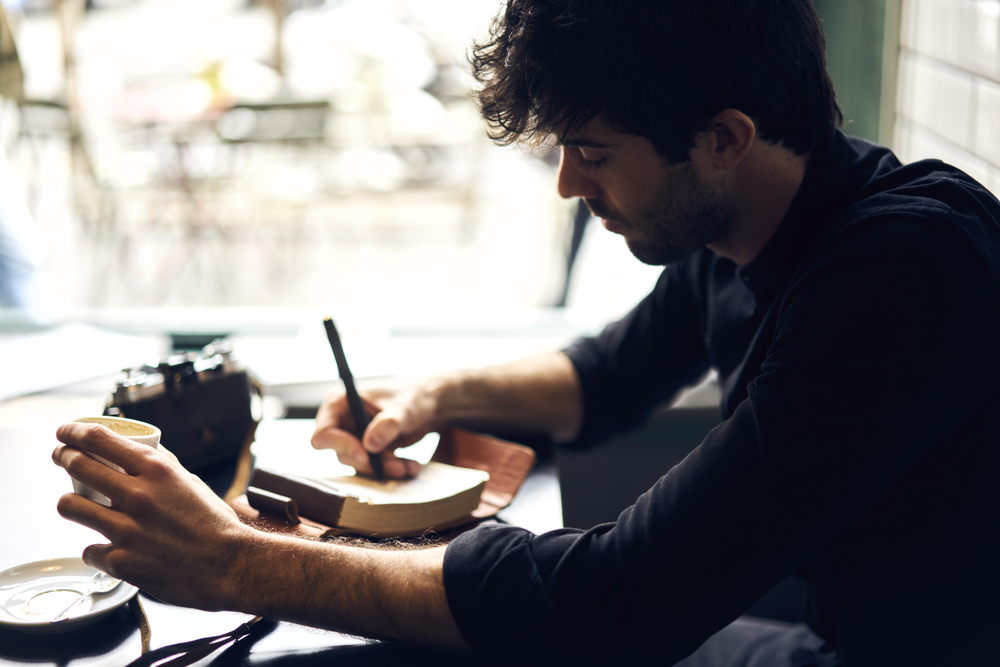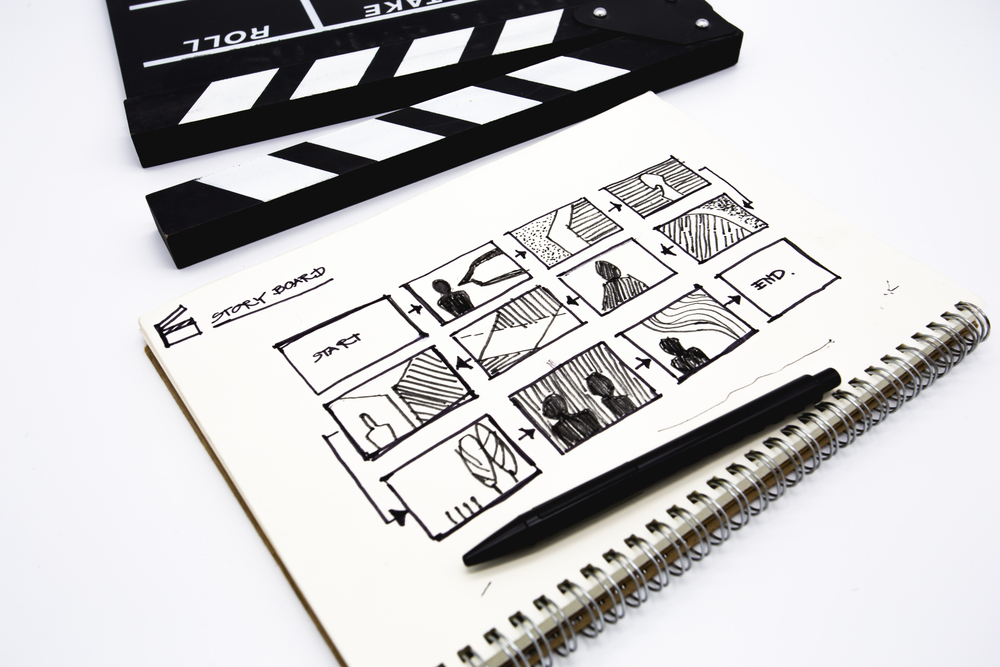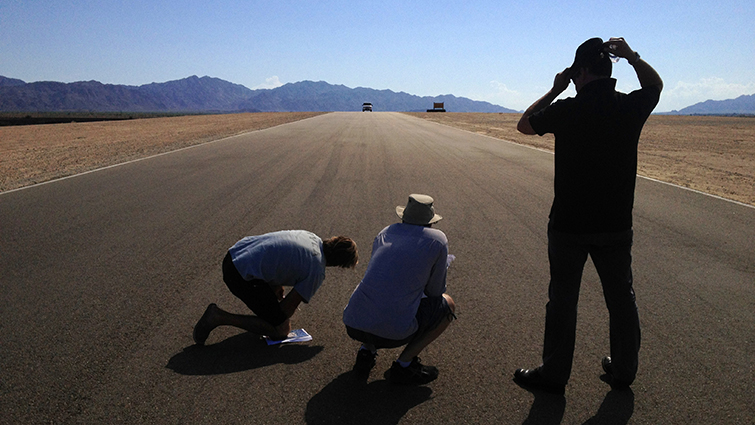
The Shreditor’s Guide to Film and Video Pre-Production
Do you tackle your video production projects entirely on your own? Here’s everything you need to know about working as a “shreditor.”
Cover image via Shutterstock.
For those of you who are unsure what a “Shreditor” is (and if you might be one yourself), check the definition below (or read up on the term in this article). If you find the concept of producing, shooting, and editing to be your ideal workflow, this series is for you.
Shreditor {sHred-uh-ter, -tawr} noun: a film and video professional who produces, shoots, and edits as a one-man script-to-screen filmmaker.
As a shreditor, you obviously have many hats to wear. While each could easily be a full-time role, it’s important to understand how they operate singly as much as they do together. Let’s dive into the first role — producer — and what you need to succeed in your quest to become an ultimate video production Shreditor.
Concept Design

Image via Shutterstock.
From the very beginnings of a project, a good producer needs to be able to work with a client to find the crux of the project and how video can be most helpful. Very often, clients will have something in mind, but you should still be prepared to work with them to refine the concept and design the right approach. It’s helpful to have a strong understanding of the various types of film and video production products. Here’s a breakdown of the main types of projects you may need to produce.
- Narrative: shorts and features.
- Documentary: shorts (or micro) and features.
- Television: broadcast news, scripted program, talk shows, web-series.
- Corporate: Promos, recruiting, explainers, training.
- Event: weddings, parties, company events.
- Social: vlog, video essays, promos, live streams.
Scripting

Image via Shutterstock.
As part of your role as producer, it’s up to you to outline a project and come up with a script. While you may associate scripts with narrative films, using a script for everything from corporate films to animations to even documentaries can be very helpful for your shooting and editing counterparts. Final Draft is perhaps the industry standard, but there are several free options that work just as well.
Here are some resources for writing, refining, and accessing your scripts on the go.
- 6 Free Scriptwriting Resources for Your Next Screenplay
- How to Break a Script Down Into a Shot List
- Need to Table Read a Script? There’s an App for That.
- Pro Insight: Highlighting Scripts
Storyboarding

Image via Shutterstock.
Once you have your script, your inner director of photography should be gearing up to partner with your inner producer for a chance to storyboard your shoot. Storyboards can vary from quick sketches to in-depth diagrams that include everything from camera movements to lighting set-ups to focal lengths. As a producer, you can use some handy apps (like this one) to digitize your storyboard process.
Here are some more storyboard resources, including a free storyboard template!
- Free Storyboard Template for Film and Video Projects
- Creating a Storyboard Edit in Premiere Pro CC 2015
- Storyboarding Your Film: Tips for Your Next Project
- The Unifying Power of Storyboards
Budgeting

Image via Shutterstock.
One of the biggest headaches for most filmmakers is dealing with budgets and proposals. If you truly embrace the shreditor lifestyle, budgeting will unfortunately be one of your biggest concerns, as it drives your project. However, budgets don’t have to be scary. With the right resources, they can be organized, manageable, and beneficial for your production.
Also, in your producer role, it’s helpful to set up a professional bank account, either under your name or an LLC. This will help you keep your personal finances separate from your work expenditures. Apps like Mint are also another great way to keep your budget tight and organized.
Here are some additional resources to help with your budgeting.
- An Overview of the Film Budget
- Film Budget Planning: How to Effectively Budget a Script Breakdown
- How to Build a Video Budget
- The How and Why of Video Production Budget & Templates
Location Scouting

Image via Melty Cone Video.
Before you begin your project, you’ll need to pick out your location(s). You may or may not have a studio available to you with a cyc wall, so it’s important to have resources at the ready should you need to rent a place. Things like background noise, lighting availability, and room for setups need consideration. Again, your producer self will appreciate keeping things like this organized with some handy apps and resources.
- 5 Tips for Finding a Great Film Location
- Location Scouting Tips: The Whys and Hows of Where
- 5 Tips For Getting Great Film/Video Locations For Free
- Free Location Fact Sheet for Film and Video Productions
Scheduling
A good producer needs to be highly organized and reliable. One of the best ways to do this is by mastering the art of scheduling and keeping a solid calendar. Whether it’s Outlook or iCal, there are plenty of great resources available — as well as more production-specialized resources (like this and this) to consider.
Check out these additional resources and tips for production scheduling.
- 15 Pro Tips to Create a More Encouraging Production Schedule
- 5 Scheduling Tips That’ll Help You Keep Momentum up During Production
- How to Plan an Effective Shooting Schedule
- Scheduling and Budgeting Your Film
Other Resources

Image via Shutterstock.
Although you may take care of all the producer responsibilities in the beginning of a project, be prepared to put back on your producer hat time from time throughout production. If anything goes wrong during the shoot and additional needs pop up, you will need to manage them as a client-friendly producer.
You’ll also need to be the one to make sure you’re fully taken care of during production. If you need to bring on a PA or 2nd or 3rd shooter, it’s your job to figure things out — not to mention little things like providing craft services for yourself and clients, printing out scripts, keeping copies of receipts, and even managing clients on-set.
Here are several more pre-production resources to have ready at your disposal.
- The 3 Most Important Tasks For A Director During Pre-Production
- What All Producers Need to Understand About Working With Directors
- 5 Tips for Planning Your Audio in Pre-Production
- 10 Free Apps for Filmmakers
Looking for more on production? Check out these articles.






